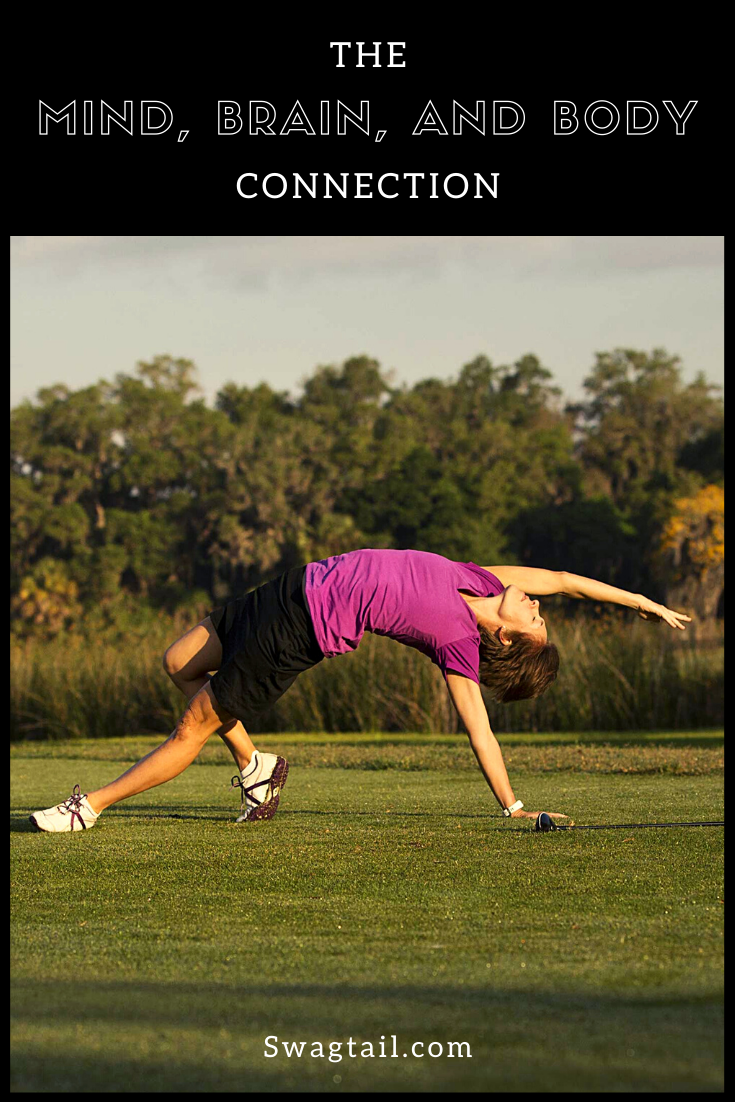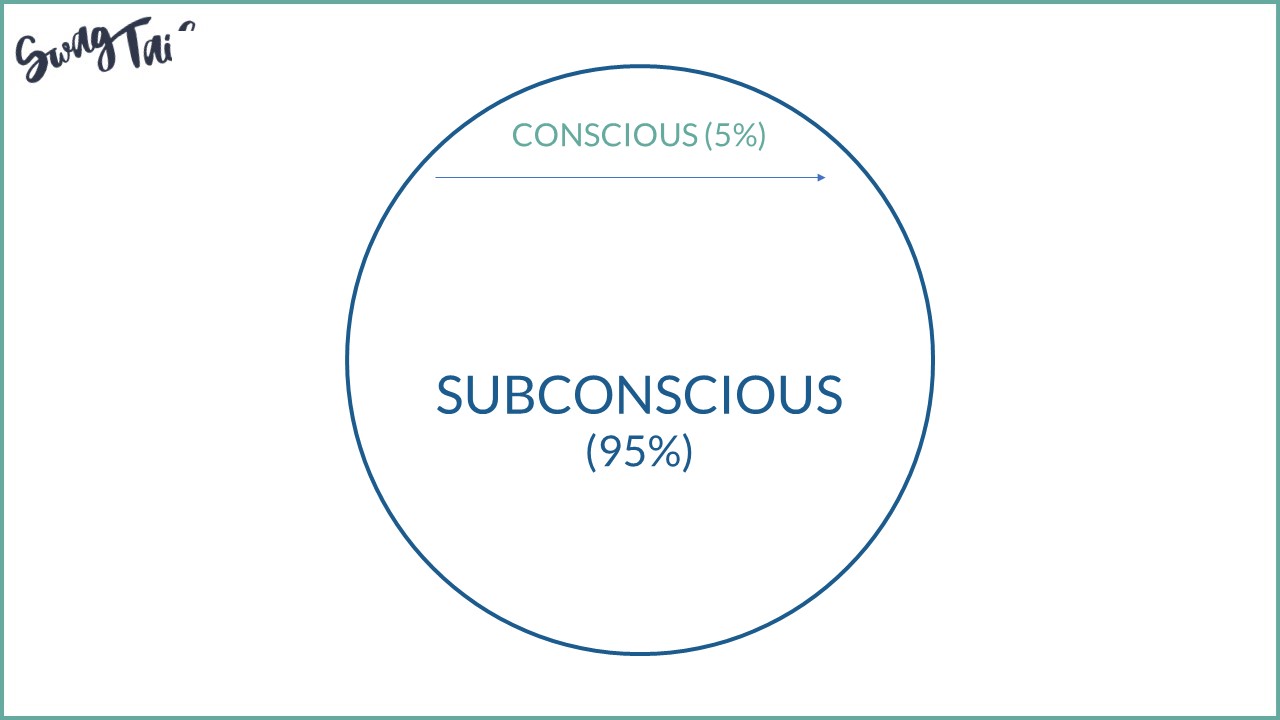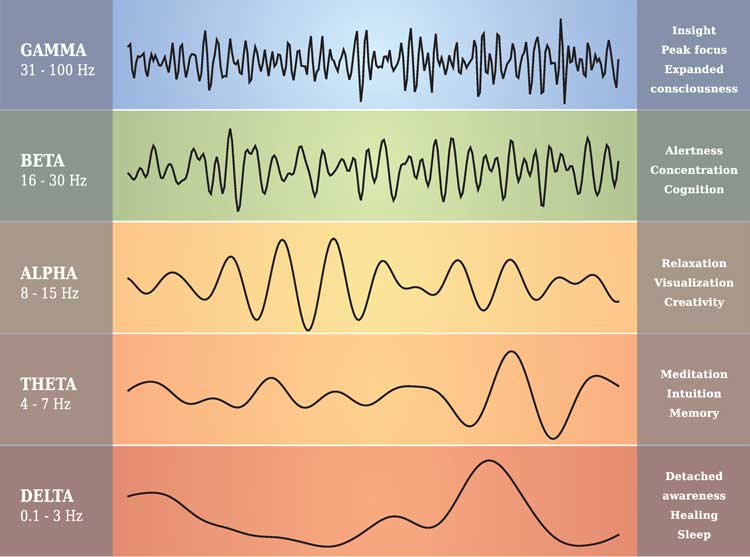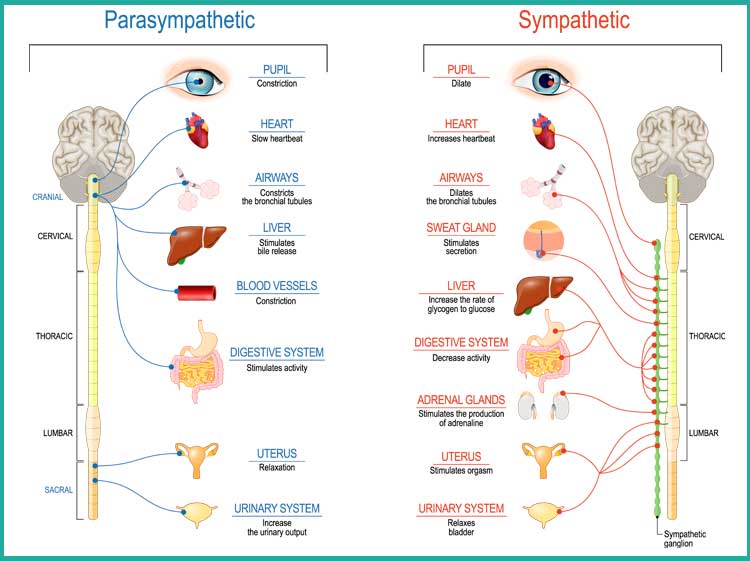 The goal of yoga is to reach Samadhi. This is known by the Greeks as ecstasis or the flow state by athletes. And while that might be the big-picture objective, most of the time we’re looking to make small, incremental changes to our practice and ourselves. To do this, we must understand the mind, brain, and body connection. Only then can we intervene to break old patterns and use the relationship between the three to our advantage. This blog post is a sneak peak into my Flexible Golfer book. Yet the principles are just as true for yogis as they are golfers.
The goal of yoga is to reach Samadhi. This is known by the Greeks as ecstasis or the flow state by athletes. And while that might be the big-picture objective, most of the time we’re looking to make small, incremental changes to our practice and ourselves. To do this, we must understand the mind, brain, and body connection. Only then can we intervene to break old patterns and use the relationship between the three to our advantage. This blog post is a sneak peak into my Flexible Golfer book. Yet the principles are just as true for yogis as they are golfers.
I wasn’t great at yoga when I began. Nor was I at golf. Both challenged me physically and mentally, and I knew that if I wanted to get good at either, I’d have to adopt some basic skills. So I started taking regular yoga classes under the expert eye of a seasoned instructor. I also hired a golf coach to learn the fundamentals of the game. To this day, I constantly get on my mat as a student and I still work with a golf pro in order to refine my skills as I progress.
This is because ongoing improvement requires making changes. It involves a transformation from who you are now into the person, and golfer, you wish to become.
As you read these words, your brain cells are making new connections. You’re already in the process of change because the brain is an organ of change. In neuroscience, this is called neuroplasticity. Even the gray matter of your brain reorganizes as you alter your behavior.
Think of it this way: when you change your mind, the brain and body change, too.
I notice that very few golfers spend any time at all learning or practicing skills that boost their focus. They don’t flex the muscles of their mind. They don’t build mental stamina. These very same people then get upset at themselves when they underperform on the course. This is despite the fact that they know “golf is 90% mental.” Maybe you know yogis who similarly only emphasize poses in the practice.
In this post, you’re going to discover how to use your mind to make improvements (in any area of your life). You’re going to uncover what prevented you from making changes in the past and you’ll begin to consciously break old patterns. As a result, you’ll have more energy and joy to embrace the new you—the you that’s a better spouse, friend, parent, boss, employee, and friend.
Photo Credit: Ember and Earth
THE MIND, BRAIN, AND BODY CONNECTION
We, humans, are complex beings made up of unique thoughts, dreams, feelings, and memories. We have specific skills, interests, and habits. These manifest as connections between any number of the 100 billion nerve cells in the brain. They also become evident via our beliefs and actions. Said another way, you have a mind, brain, and body that seamlessly work together to give you life and once you understand each, you can utilize them to facilitate the changes you seek.

YOUR MIND
There are two main aspects of your mind—the conscious mind and the subconscious mind. You’re probably most familiar with the conscious mind because it’s how you use logic and reasoning on a daily basis.
Your conscious mind allows you to analyze your surroundings, evaluate risks, and make decisions accordingly. It’s how you select the best tee times for the week and choose the best playing partners. The conscious mind is also how you can gauge the distance to the hole during your round and select the proper club. It even helps you refer to past memories or consider future possibilities when making a decision.
Willpower lives in the conscious mind, too. Willpower is the vehicle through which you overcome resistance in order to take action, This is relevant to change because we’re creatures of comfort. We prefer the familiar over the unknown.
Genetically we’re wired to save energy. And since starting something new requires more of your inner resources, it’s easier to stay the same. This means that if we want to reach a new goal or improve in some way, we have to get a little uncomfortable. We have to tap into faith and creativity to grow as well as use our intention-setting capability of the conscious mind to stay focused through it all.
Interestingly, the conscious mind doesn’t fully develop until we are 7-12 years of age and it only accounts for 5% of your total mental landscape.

The real powerhouse is the subconscious mind. It processes 40 million bits of information per second and performs thousands of body functions automatically.
When we’re born, we are totally subconscious mind. A baby soon learns that crying elicits a response from the parent to feed her or change a dirty diaper. This is a positive identification that becomes a behavior. Similarly, if a toddler puts his hand on a hot stove, he soon links the stove—an outside object—with his internal feelings of discomfort. We call those “ouchie boo-boos” in our family. In any case, a negative identification gets memorized to prevent future pain. The subconscious mind consists of each positive and negative association made throughout your experience. These give rise to the habits, behaviors, skills, and beliefs you possess today.
While the conscious mind helps you learn something new, the subconscious stores that knowledge. This is incredibly helpful because you wouldn’t want to relearn how to grip a golf club each round or how to drive a car every visit to the supermarket. In this way, the subconscious amplifies your efficiency in daily life. This only becomes problematic when your subconscious patterns run contrary to your goals. We’ll talk more about that next week.
THE BRAIN
Each conscious or subconscious thought activates specific neural networks in the brain. This nerve activity shifts the blood flow in the brain. It also creates measurable brain wave patterns, each of which support various body functions and correlate with different behavioral states. These brain wave patterns include:

Beta: Much of your waking life is spent in the Beta. Low range beta occurs when you are in a relaxed, interested state. Mid-range beta is produced when you have a sustained level of focus and some reasoning is involved. When all of your senses take in stimuli from your environment and package it for greater understanding, mid-beta is present, too. High beta patterns are most evident with stress. Or they show up when you’re learning in a highly-aroused state. These brain waves are helpful in the short term because you can meet the unexpected demands of daily life. Yet staying in high beta for an extended period of time negatively affects your nervous system.
Alpha: Your brain can slip into an alpha state from a low-range beta state when you’re learning something new. Perhaps you stop to ponder a new concept or daydream about its implications. When this happens, you turn your attention from the outer world to the inner world. You also experience these slower brain waves when you close your eyes.
Theta Theta waves are even slower than alpha waves. When theta patterns are present, the body is relaxed and the doorway to the subconscious opens. Maybe you’ve had a moment of quiet where a fresh, creative idea pops into your mind or you get inspired to take a specific action (like call an old friend). This occurred thanks to this level of brain activity.
Delta: Delta waves occur when you’re in a deep sleep and the body can restore itself. There is little conscious awareness here.
Gamma: Gamma waves are the highest frequency of the brain waves that often occur in a highly-aroused state generated from within. It’s also referred to as a superconscious state and pairs with mystical experiences.
While I don’t expect you to memorize each detail of these brain wave patterns, I do want you to remember this: each type of brain wave has a direct physiological impact and with practice, you can actually sense what each of these patterns feel like in the body. A regular meditation practice trains you to do this.

Photo Credit: Ember and Earth
YOUR BODY
As you think different thoughts, your brain circuits activate in corresponding sequences. A cascade of chemicals is then released into the body. If you’re worried about an upcoming tournament or presentation at work, cortisol floods your system. This stress hormone mobilizes your internal resources so that you can handle the perceived emergency.
If you think loving thoughts, toward a family member or pet, oxytocin gets released. Theta brain waves also send serotonin throughout the body which gives you a greater sense of inner well-being and connectedness to others. You interpret these chemical reactions as emotions. And how you feel, combined with how you think, creates your overall state of being.
THE GAP
Right now you have a current set of thoughts, beliefs, and habits about yourself as a golfer. You reinforce certain emotions each time you play. You can sustain this state of being and get more of the same. Only you’re here to upgrade yourself and your golf game. In order to improve, you must bridge the gap between who you are right now and who you want to become. This gap is natural. It happens throughout your life on a wide array of subjects. This desire to change for the better is how we evolve.

What I know for sure is that you would have already made the changes to your golf game if you knew what to do. Perhaps you’ve already worked with a pro and refined the physical skills necessary to thrive on the course. (you build these basic skills on the mat, too).
Yet despite your hours on the range or putting green, you might still freeze up under pressure. Or you might not be making progress as quickly as you’d like. Perhaps you even sustained an injury in the past and you want to approach your game differently moving forward. I’ll show you why you likely haven’t had success in the past. Then I’ll walk you through specific ways you can flex the muscles of your mind to elicit positive change starting now.
WHAT PREVENTS LASTING CHANGE

According to neuroscience, your brain is organized to reflect everything you know in your environment. All of your knowledge and experiences are stored in the subconscious mind and trigger the same neural pathways of the brain. This means you view your environment through the lens of past experience.
So let’s say you’re frustrated by a particular hole at your home course. It could be a particularly long hole, like #14 at my home course, Bailey Creek, which extends endlessly uphill. Or you might get frustrated with a short par 3 where you have to hit over water. If you continuously struggle at this point in your game, you might start to repeat specific thoughts like, “Not this hole again,” or “I always hit into the trees to the right,” or “I never play well around water.” You can see this type of dialogue in yogis as well.
This causes the pre-programmed neural networks in your brain to fire in incoherent patterns. Your brain waves become chaotic and uneven. They are disorderly and imbalanced. As a result of these incoherent patterns, may compartments of your brain no longer work together. This would be equivalent to each member of an orchestra playing the music they prefer instead of following the written score. The outcome is inefficient and undesirable.

Stress-related chemicals are then discharged into the body. Your adrenal glands start to pump adrenaline into your bloodstream. Your heart beats faster, your blood pressure rises, and your muscles tense up. Each of these responses can counter your ability to relax as you stand over the ball. You likely grip your club more firmly. Or you might abandon any sense of trust in your swing altogether. This body-wide response then triggers even more doubt and frustration in the mind. The same neural networks get activated again and the cycle perpetuates. It’s like being stuck on a spinning hamster wheel with no escape in sight. And in this pattern of sameness, it’s very hard to improve.
Even if you try to use willpower to change, that 5% of your conscious mind is going up against the 95% memorized patterning of the subconscious. Which do you think will win? You might get lucky every now and then, or be able to keep your focus on a good thought when you’re not distracted. More likely, though, you’ll need to take a different approach altogether to attain lasting changes. That’s exactly what we’ll talk about in next week’s article.
PUTTING IT TOGETHER
You are an incredibly complex and wonderful being. You have a mind, body, and brain that work seamlessly together to give you life. And when you understand the relationship between this triad, you can tap into the power of each to get rid of old patterns, improve on a variety of subjects, and embrace your best self (on the yoga mat, golf course, or anywhere in between).
I will note here that the circle moves in a counterclockwise direction, too. 90% of your serotonin lives in your gut, which directly influence your brain activity. and mood. Similarly, the heart sends more signals up to the brain that it receives. Check out my interview with HeartMath CEO Howard Martin. Or if you alter the brain with illicit drugs or pharmaceuticals, your mind and body receive downstream effects. We’ll talk more about this reverse order in next week’s post as well.
Take Action Now:
- Join our March Meditation challenge to boost your mind, brain, and body connection.
- Identify which aspects of your life you want to improve (I suggest writing these in your journal)
- Become aware of any limiting thoughts that could be perpetuating a cycle of negativity (make notes about these, too)
- Choose where you want to intervene, break old cycles, and reach your goals. (Hint: the article goes live next week)








Leave A Comment